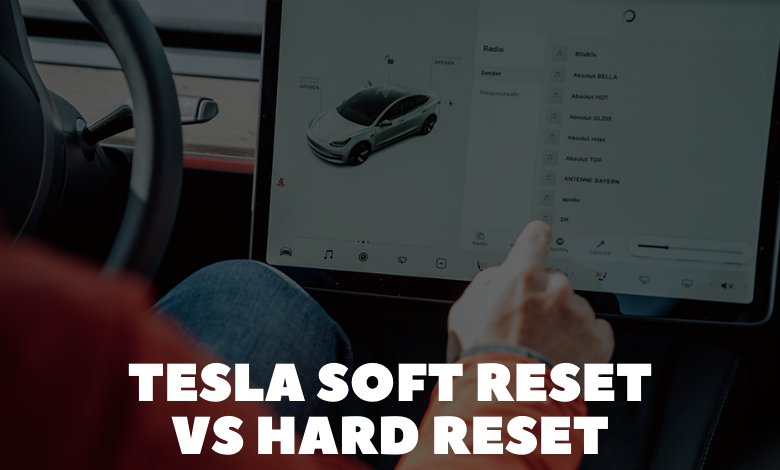Tesla Soft Reset vs Hard Reset (A Comprehensive Comparison)

Understanding the distinction between soft and hard resets is fundamental in the realm of Tesla troubleshooting. While both aim to resolve software-related issues, they operate distinctly, serving as crucial tools for maintaining optimal performance and functionality in Tesla vehicles.
1. Understanding the Difference between Soft and Hard Resets
In the realm of Tesla troubleshooting, distinguishing between soft and hard resets is crucial. While both serve the purpose of resolving software-related issues, they operate differently.
2. Performing a Soft Reset
Soft resets involve restarting the operating system or touchscreen of your Tesla. They’re recommended as the initial troubleshooting step due to their simplicity and efficiency.
3. When to Opt for a Soft Reset
Soft resets are suitable for minor software glitches such as frozen touchscreens, connectivity issues, or erratic behavior from the Autopilot. They’re quick and straightforward, making them ideal for addressing common software-related concerns.
4. How to Perform a Soft Reset
Soft reset methods vary depending on the Tesla model. For instance, in Model S/X, you can reset the touchscreen and instrument cluster simultaneously by pressing and holding both steering wheel scroll wheels until the touch screen goes dark.
5. Understanding Full Soft Reboot for Model 3/Y
For Model 3/Y, a full soft reboot involves placing the vehicle in park, accessing the Controls menu, and powering off the vehicle. This process clears minor software glitches and typically takes only a few minutes to complete.
6. Introduction to Hard Resets
Hard resets, also known as factory resets, are more drastic measures. They involve erasing all data and settings on the Tesla’s computer system and are reserved for severe software issues or when soft resets fail to resolve the issue.
7. Performing a Hard Reset: Step-by-Step Guide
Hard reset procedures differ between Model S/X and Model 3/Y. For Model S/X, it involves turning off the climate control system, accessing the frunk, and disconnecting the 12V battery ground. Meanwhile, for Model 3/Y, it entails a more intricate process involving accessing the frunk, disconnecting the 12V battery terminal, and removing the seats.
8. Precautions and Considerations for Hard Resets
It’s essential to exercise caution when performing hard resets, as they can potentially void warranties or cause damage if not executed properly. Only attempt a hard reset as a last resort and consider seeking professional assistance if unsure.
9. Deciding Between Soft and Hard Resets
The choice between soft and hard resets depends on the severity of the issue and your familiarity with Tesla’s systems. Soft resets are preferred for common glitches, while hard resets are reserved for persistent or critical issues.
10. Conclusion: Navigating Tesla Reset Options
In conclusion, understanding the nuances between soft and hard resets empowers Tesla owners to effectively troubleshoot software-related issues. By following the appropriate reset procedures and exercising caution, you can maintain the optimal performance of your Tesla vehicle. Remember, when in doubt, seek guidance from Tesla support or certified specialists to ensure the safety and functionality of your vehicle.
